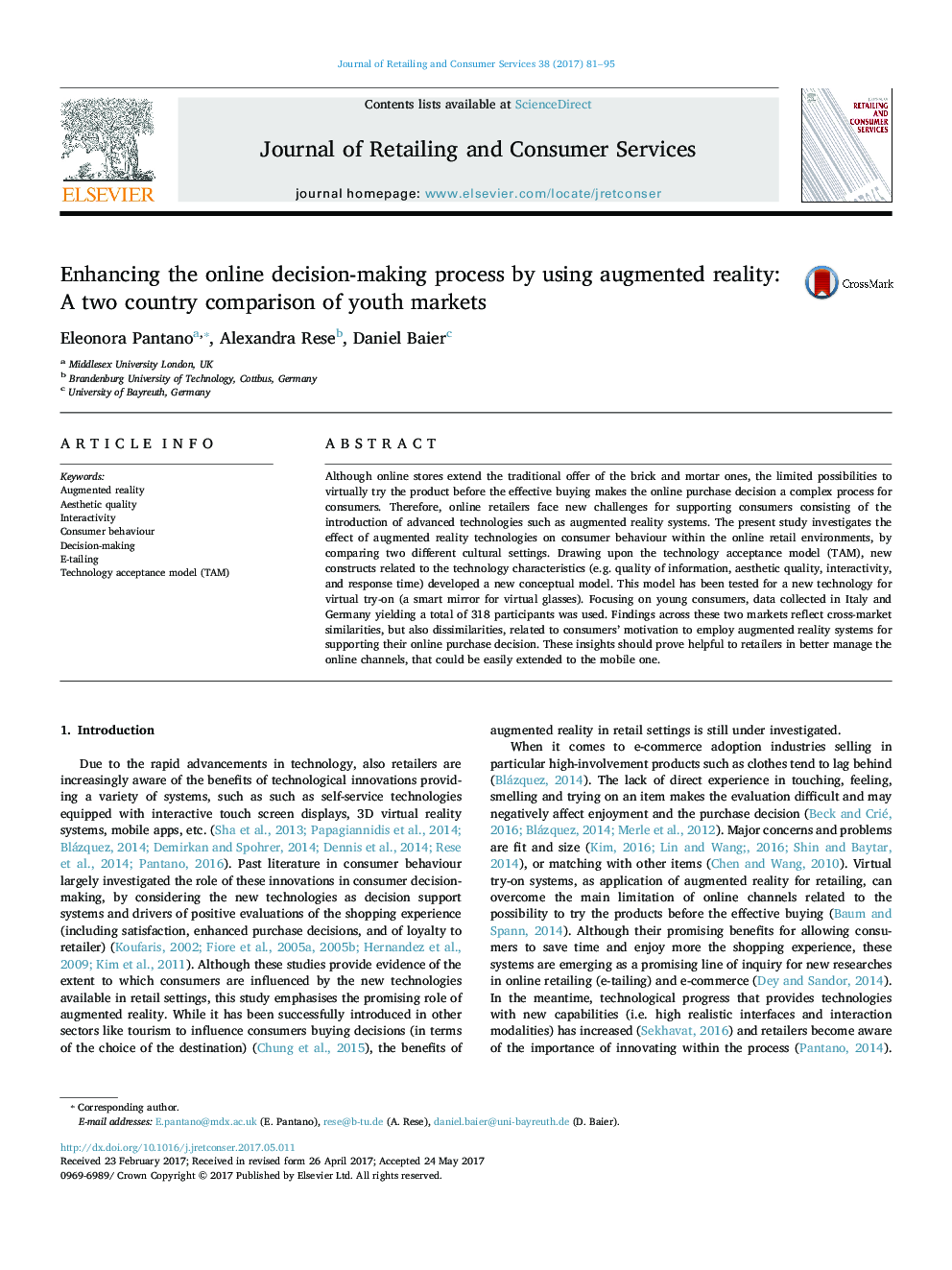| Article ID | Journal | Published Year | Pages | File Type |
|---|---|---|---|---|
| 5111362 | Journal of Retailing and Consumer Services | 2017 | 15 Pages |
Abstract
Although online stores extend the traditional offer of the brick and mortar ones, the limited possibilities to virtually try the product before the effective buying makes the online purchase decision a complex process for consumers. Therefore, online retailers face new challenges for supporting consumers consisting of the introduction of advanced technologies such as augmented reality systems. The present study investigates the effect of augmented reality technologies on consumer behaviour within the online retail environments, by comparing two different cultural settings. Drawing upon the technology acceptance model (TAM), new constructs related to the technology characteristics (e.g. quality of information, aesthetic quality, interactivity, and response time) developed a new conceptual model. This model has been tested for a new technology for virtual try-on (a smart mirror for virtual glasses). Focusing on young consumers, data collected in Italy and Germany yielding a total of 318 participants was used. Findings across these two markets reflect cross-market similarities, but also dissimilarities, related to consumers' motivation to employ augmented reality systems for supporting their online purchase decision. These insights should prove helpful to retailers in better manage the online channels, that could be easily extended to the mobile one.
Keywords
Related Topics
Social Sciences and Humanities
Business, Management and Accounting
Marketing
Authors
Eleonora Pantano, Alexandra Rese, Daniel Baier,
